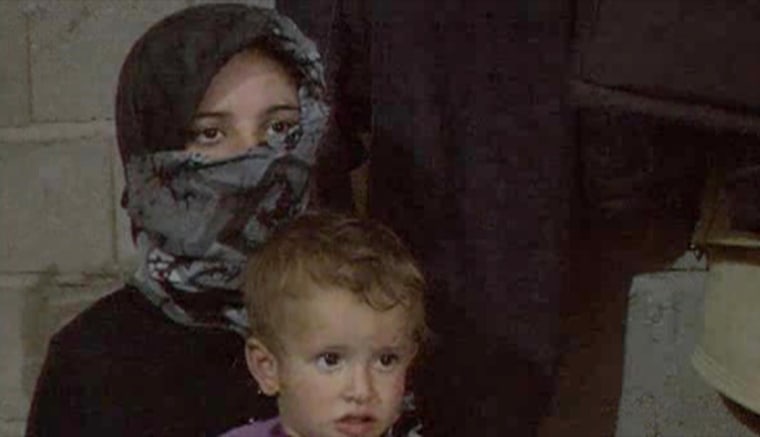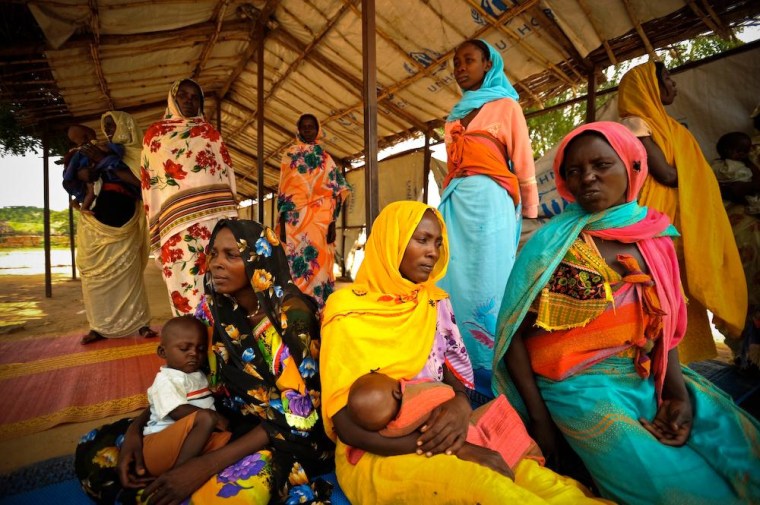Somalia is the worst place in the world to be a mother, a new report finds, and women and children are 14 times more likely to die in a disaster than men are. Women from rich countries are usually way better off, with one glaring exception: the United States.
A batch of new reports on women and children shows the U.S. is moving in the wrong direction, with an increase in pregnancy and birth-related deaths linked to poor prenatal care and conditions such as obesity and diabetes.
“American women face the same risk of maternal death as their counterparts in Iran or Romania,” Save the Children says in its annual report on mothers and children, released Monday.
Another report, this one from the United Nations, shows things can get better. The U.N. survey shows maternal deaths have fallen 45 percent globally since 1990. In 1990, 523,000 women died from complications of pregnancy or childbirth; last year, 289,000 women did.
“American women face the same risk of maternal death as their counterparts in Iran or Romania."
Afghanistan is one great example of improvement, says Save the Children’s president and CEO Carolyn Miles. “They were actually the worst place to be a mother in 2010. They moved up 30 places in 2013,” Miles told NBC News.
How? “They invested in community health workers so that moms actually had people there when they were delivering,” she said. “Women had been just dying in childbirth, and after that change, the maternal mortality rate came down.” Afghanistan’s standing in the Save the Children report also improved because of investments in education for girls, she said.
Despite improvements, the reports all show the same thing – thousands of women and children dying. “Each day, 800 mothers and 18,000 young children die from largely preventable causes,” Save the Children says.
In most of the world conflict or natural disasters are to blame: war in Syria and Afghanistan, a typhoon in the Philippines, continued unrest in the Democratic Republic of Congo and Somalia.
“Violence and conflict have uprooted more families than at any time on record. By the end of 2012, more than 45 million people worldwide were forcibly displaced due to conflict or persecution,” Save the Children says in its report.
“Syria’s civil war now in its fourth year has had a devastating impact on mothers and children. Almost 1.4 million children and 690,000 women have fled the conflict and become refugees in neighboring countries, while over 9 million people inside Syria are in need of lifesaving humanitarian assistance. Estimates suggest as many as 1,000 women and children a month have been killed in the conflict.”
Polio and measles have made a comeback as vaccination campaigns fall apart, the report adds.

“In addition, natural disasters, which can be especially deadly in the world’s poorest communities, displaced more than 32 million in 2012.”
A World Health Organization report finds that Africa, as a region, is the riskiest place to get pregnant and give birth.
“A 15-year-old girl living in sub-Saharan Africa faces about a 1 in 40 risk of dying during pregnancy and childbirth during her lifetime,” said Dr. Geeta Rao Gupta of the U.N. Children’s Fund (UNICEF). “A girl of the same age living in Europe has a lifetime risk of 1 in 3,300 – underscoring how uneven progress has been around the world.”
Forced marriages and rape often bring young girls to motherhood before they or their bodies are ready, the report finds. “More than 15 million girls aged 15 to 19 years give birth every year – one in five girls before they turn 18 – and many of these pregnancies result from non-consensual sex,” added Kate Gilmore of the U.N. Population Fund (UNFPA).
“Relatively simple and well-known interventions, like midwifery services and gender-based violence prevention and response, can make a huge difference if scaled up and coupled with investments in innovations, especially in the area of contraceptives.”
WHO found that the biggest killer of pregnant women was poor health: pre-existing medical conditions such as diabetes, malaria, HIV and obesity, worsened by the strain that pregnancy puts on the body, killed 28 percent of the women.
Severe bleeding during and after birth killed 27 percent, high blood pressure caused by pregnancy caused 14 percent and infections killed 11 percent. Having trained attendants to help during pregnancy and birth can prevent many of these complications.
But the United States has a unique profile of danger to mothers and newborns: poor health care for too many, several reports found.
“The United States is among just eight countries in the world to experience an increase in maternal mortality since 2003 – joining Afghanistan and countries in Africa and Central America,” a team at the University of Washington writes in another report on maternal deaths, published in the Lancet.
In the U.S., 18.5 mothers died for every 100,000 live births in 2013, more than double the figures for Saudi Arabia, where 7 mothers die for every 100,000 giving birth, and Canada, where 8.2 per 100,000 die.
“There’s no reason that a country with the resources and the medical expertise that the US has should see maternal deaths going up."
And it’s not because older women are having babies. The biggest increase in maternal mortality was among women aged 20 to 24.
A lack of access to prenatal care and other health services, and pregnancies complicated by obesity, diabetes, and other conditions, may be to blame, Dr. Christopher Murray of the Institute for Health Metrics and Evaluation at the University of Washington and colleagues found.
“There’s no reason that a country with the resources and the medical expertise that the U.S. has should see maternal deaths going up,” Murray said in a statement. “The next step would be to examine local-level differences in maternal deaths to look for patterns and the drivers behind those patterns.”
The 2010 Affordable Care Act seeks to get more women covered by health insurance, and it mandates that insurance companies pay 100 percent of the costs of health screenings and health needs such as contraceptives, as well as maternity and newborn care.
Fifteen years ago, the United States ranked 4th in the world in Save the Children’s report, Miles said. Now it’s 31st. “A big piece of it is the rest of the world has gotten so much better on these indicators,” Miles said. “But we do not do well on maternal mortality or child mortality or women’s representation in (government),” she added.
“The more women that you have representing the population, the better the policies will be for women and children.”
